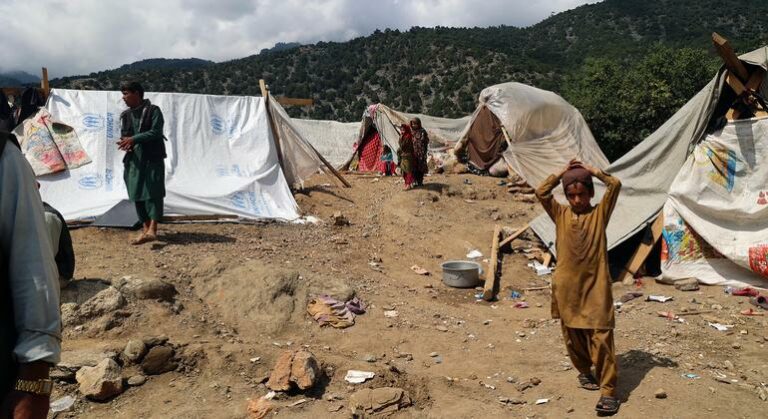The Storm is Brewing: NWS Staffing Woes and Hurricane Season Concerns
As the calendar turns towards the warmer months, a sense of unease hangs in the air. Not because of the rising temperatures, but because of the approaching hurricane season. Meteorologists are sounding the alarm, and it’s not just about the potential for powerful storms. The National Weather Service (NWS), the crucial agency responsible for keeping us informed and safe, is facing a significant crisis: staffing shortages. This isn’t just about a few vacant positions; it’s a systemic issue that could leave communities vulnerable when severe weather strikes. What happens when the very people tasked with protecting us are stretched thin? The consequences could be devastating, and it’s time we pay close attention.
The NWS plays a vital role in our communities. Beyond providing daily forecasts and weather updates, they issue warnings for dangerous weather events like tornadoes and hurricanes. This critical service helps people prepare, evacuate, and ultimately, save lives. The NWS provides forecasts, watches, and warnings, which are essential for helping people stay safe. The staffing shortages are not merely administrative problems; they translate directly into a decreased capacity to provide those crucial services. In these times of extreme weather, having the right people in place can mean the difference between life and death. The implications of these shortages are far-reaching, affecting the entire nation as hurricane season draws near.
The Empty Chairs: Why the NWS is Short-Handed
The reasons behind the NWS staffing shortages are complex, combining elements of retirement, departures, and unfilled vacancies. According to reports, a significant number of NWS offices are operating without a meteorologist-in-charge, the most senior position at each location. These leaders are more than just managers; they are the glue that holds these offices together, ensuring smooth operations and effective communication. Moreover, the chief meteorologists are frequently the individuals who brief the media, which is essential for communicating vital information to the public before, during, and after extreme weather events. The absence of these key figures can impede the agency’s ability to respond effectively to weather emergencies, potentially putting communities at risk.
The situation is particularly concerning in areas that are frequently hit by hurricanes, such as New York City, Houston, and Tampa. The Houston-Galveston office, for example, is reportedly operating without any managers on staff. This lack of leadership creates significant challenges in coordinating the efforts of the team. When you factor in the unpredictability of hurricane season, the need for comprehensive staffing becomes even more acute. The vacancies extend beyond leadership roles. Some offices are reducing operational hours, further limiting their capacity to provide around-the-clock weather monitoring and alerts. This is a dangerous trend that requires immediate attention.
The Rising Tide: How Climate Change Fuels Storms
This year, forecasters are predicting another active hurricane season, and the combination of shifting ocean temperatures and other factors has left them unsure of how many storms will form and how intense they will be. The last decade has seen an above-average number of storms. The intensity of these storms is also increasing, which is a significant concern for people living near the coast. The impact of climate change cannot be ignored when discussing the increase in storm intensity and frequency. Scientists have established that rising global temperatures, fueled by human-generated pollution, supercharge the conditions that create these dangerous weather occurrences. Warmer ocean temperatures provide more energy for hurricanes to develop, and changes in atmospheric patterns can influence their paths.
The impact of climate change is undeniable, and it has far-reaching consequences for communities across the nation. These changes contribute to the increased intensity of severe weather events, including hurricanes. The combination of rising sea levels, warmer waters, and other climate-related factors creates a perfect storm for more destructive hurricanes. Therefore, it’s essential that we address the root causes of climate change while also preparing for the storms that are already upon us. The NWS staffing shortages are not occurring in a vacuum. They are happening against the backdrop of a changing climate and more powerful storms.
Preparing for the Worst: What You Can Do
So, what can you do to protect yourself and your family? If you live in a hurricane-prone area, it’s crucial to have an emergency kit ready and to know what to do in case a storm hits near you. This includes having a plan, knowing your evacuation routes, and having a supply of essentials such as food, water, medications, and a first-aid kit. One of the best ways to be prepared is to stay informed. Monitor weather reports regularly, pay attention to any warnings or watches issued by the NWS, and heed the advice of local authorities.
There are also measures that you can take to make your home more resilient to severe weather. Combine a battery system with solar panels to provide power during an outage. By getting quotes through EnergySage’s free service, you can compare vetted solar installers. Also, consider home improvements like reinforcing your roof, securing doors and windows, and clearing your yard of any potential projectiles. Planning ahead is crucial, so don’t wait until the last minute. The time to prepare is now, and the more you do beforehand, the safer you and your loved ones will be. Join a newsletter and make sure you’re staying current with any developing situations.
The Calm Before the Storm: A Call to Action
The NWS staffing shortages are a serious issue that requires immediate attention. It’s a complex problem, rooted in systemic issues such as budget cuts, retirements, and a lack of resources. While it is necessary to acknowledge the seriousness of the situation, it is also important not to lose hope. By addressing the staffing issues, supporting the NWS, and taking steps to mitigate the impacts of climate change, we can increase the likelihood of safe communities. The time to act is now, so that we may make sure we’re prepared for the challenges to come.




